|
I have fielded this question from multiple people, and I know from my own sales data that many people are not using a toner, or not regularly. Perhaps more information is needed to convince you to include a toner in your daily regimen. When you're using the right one, you won't want to be without it.
In some product lines, toners are used to balance the pH of the skin or finish the cleansing process because many cleansers are alkaline or strip the lipid bi-layer (acid mantle). In Dermalogica, however, the cleansers are already acid balanced so a toner is not needed to restore the acidity of the skin. Dermalogica toners add additional moisture to the skin, but more importantly, help transport the next product (ideally a treatment serum) deeper into the epidermis. The deeper into the epidermis active ingredients travel, the more effective they are. So, think of a Dermalogica toner as a product booster; you'll get more bang for your buck out of your treatment serum. Toners can also be used to refresh and hydrate as needed throughout the day, even over makeup. In the Dermalogica line, there are 5 toner formulas to choose from based on skin type or benefits desired. Multi-Active Toner- An ultra-light spritz that refreshes and hydrates the skin while smoothing the surface. Helps condition skin to prepare for proper moisture absorption Antioxidant Hydramist- A refreshing antioxidant shield with flash-firming properties to improve skin texture, fight damaging free radicals and intensely hydrate dry, dehydrated skin. UltraCalming Mist- A soothing, hydrating mist that quickly relieves sensitivity while helping to calm redness, stinging and aggravated skin. Application note: instead of spritzing directly on skin, you can spritz a cotton ball and wipe it over your skin. I'd be happy to advise you on which formula is right for you!
1 Comment
On August 27, I went to IDI Chicago to train in the new Pro Power Peel. My skin was double cleansed, then the peel treatment began. Step 1 is a solution that degreases the skin for even penetration of the peeling solutions. Then 3 peel solutions were applied layer by layer and a 4th solution was used as a spot treatment on a few acne lesions. The peel treatment is finished by neutralizing the peeling agents and applying UltraCalm products and sunscreen. The photo gallery shows the initial scabbing that occurred in a few spots. Hard to see is the shedding of dead skin that began the day after the peel. By the last pics, on Sept. 2, you can see how all the scabbing is gone and how clear my skin became.
Despite a wealth of knowledge about prevention, skin cancer cases are increasing, especially in those 15-29 years old. In this post I offer some basic information about skin cancer. Disclaimer: I am not a medical professional and cannot diagnose skin cancer. I do, however, pay attention to lesions that show characteristics of skin cancer and advise my clients to have them checked by a doctor or help them monitor the lesions for changes. All of the following information was gleaned from various sources including The Skin Cancer Foundation, The National Cancer Institute, American Academy of Dermatology, Skin, Inc, and Mary Kay, Inc. What is skin cancer? The National Cancer Institute defines skin cancer as a disease in which cancer cells are found in the outer layers (epidermis) of the skin. The epidermis is comprised mainly of flat, scaly cells called squamous cells; round cells called basal cells; and melanocytes which are the cells that produce melanin. The 3 main types of skin cancer are named for the cells they affect: Squamous Cell Carcinoma, Basal Cell Carcinoma, and Melanoma. Basal Cell Carcinoma • most common form of skin cancer in most ethnic groups • more than 2 million cases diagnosed annually • slow growing and seldom spreads to other parts of the body • typically found on areas exposed to the sun such as head, face, arms & hands • primary risk factor is amount of UV exposure • watch for translucent lesions with irregular, and possible raised, borders and tiny blood vessels through them Squamous Cell Carcinoma • 2nd most common skin cancer in most ethnic groups • 700,000 new cases annually • rarely spread to other body parts, but more commonly so than basal cell carcinoma • found mainly on areas exposed to the sun but can form in mouth lips, and genitals • UV exposure is the primary risk factor for most ethnic groups, but not for people of African descent. In that population the main risk factors are skin conditions that result in scarring or chronic inflammation such as leprosy, burn scars, radiation therapy, and physical trauma to the skin. • characterized by irregular, crusted, red papules (bumps) that don't go away; they often look like warts. Melanoma, aka Cutaneous Melanoma or Malignant Melanoma • least common but most dangerous form of skin cancer across all ethnic groups • more than 87,000 cases of melanoma are expected to be diagnosed in 2017 • CAN spread to other organs through the blood or lymph system • Melanoma lesions can appear anywhere, even under finger or toenails and soles of feet. • Lesions can start as a flat or raised pigmented area. • The overall 5-year survival rate for patients whose melanoma is detected early, before the tumor has spread to regional lymph nodes or other organs, is about 98 percent in the US. The survival rate falls to 62 percent when the disease reaches the lymph nodes, and 18 percent when the disease metastasizes to distant organs. • Know the ABCDE's and have a doctor examine any spot with these characteristics: Asymmetry; Border (irregular or poorly defined); Color (can be varied shades of brown, black, red, blue or white- watch for change of color); Diameter (larger than 6 mm); and Evolving (spot that changes in size, shape, or color). Also have checked any mole that feels hard, lumpy or swollen, is tender to the touch, bleeds, or oozes. • Daily use of sunscreen cuts your risk in HALF. Check your whole body annually. You can print out a mole map and keep track of your spots. If any lesion/spot looks suspicious, see a doctor for diagnosis. You'll find much more in depth information on the websites linked below. Skincancer.org American Academy of Dermatology BODY MOLE MAP These are just a few images of skin cancer lesions. The appearance of lesions varies widely. Consult a doctor about any lesions on your skin that concern you.
Parabens in cosmetics
Have you ever seen a product labeled "paraben free" or read something about the paraben controversy? It has been a hot topic in the beauty industry for several years now. Like mineral oil, I think parabens are getting a bad rap so I wanted to offer a little education on the topic. What are parabens? Parabens are a class of preservatives which are naturally derived, organic, and have been used for over 80 years in thousands of products we use every day, including beauty products and food. In fact, numerous fruits and vegetables, including blueberries, carrots, cucumbers, and raspberries produce parabens to protect themselves from bacterial attacks. Why are preservatives used in beauty products? Preservatives are absolutely essential in topical product formulations to keep the product from becoming a bacteria breeding ground. Product labels that claim a product is "preservative free" might be misleading you. Every cosmetic product containing water (which is a LOT of them) simply has to have something in it that inhibits yeast, mold and bacteria growth or you'd have to throw it away in a few days. There are products that don't contain water or contain certain essential oils or have a pH level that inhibits organism growth and, therefore, don't need preservatives added. There are numerous preservatives formulators have to choose from; some are manmade and some come from nature (ex. honeysuckle extract). Why is there a controversy about parabens specifically? Parabens have been under attack since 2004 when a study by Philippa Darbre, Ph.D., was published in the Journal of Applied Toxicology. That study showed paraben-like substances in breast cancer tissue. Apparently, the media jumped on this "headline" and ran with it and the public's fear has had a major impact on the beauty industry. Never mind the fact that the experiment included no control group (the study never should have been published because of this) and the author never claimed that parabens, applied topically, were the cause of the tumors. Because of the extreme consumer backlash against parabens, many manufacturers (including Dermalogica) are moving away from using parabens despite the scientific data supporting their safety and efficacy. Unfortunately, some of the alternative preservatives need to be added in higher concentrations, can be more irritating to the skin, and can drive up the cost of the products. My opinion after consulting many different sources, is that parabens are safe in cosmetic preparations. As a skin therapist, it irks me that consumer opinion based on creative marketing and misinformation can sway an entire industry away from sound science and safe ingredients. You can research it and decide what's best for you. Be sure to consider the source and whether financial gain could influence the information. Below are links to a few of the articles I read. http://www.americanspa.com/americanspa/spa-treatments/paraben-paradox http://www.dermalinstitute.com/us/library/27_article_To_Paraben_or_Not_to_Paraben.html http://www.skininc.com/skinscience/ingredients/The-Current-State-of-Preservatives-213883861.html http://www.fda.gov/cosmetics/productandingredientsafety/selectedcosmeticingredients/ucm128042.htm Most of the time when someone tells me they don't like their eyeliner, I end up finding out it's because of user error. Same is usually true when someone tells me they don't wear eyeliner because "it doesn't go on right" or 'it's too dry". There are many eyeliner formulations on the market today- wooden pencil, mechanical pencil, chubby crayon, microliner, cream, gel, mousse, and liquid. You can also swipe a damp eyeliner brush across powdered eye color and use as liner. So, there's a form for everyone to claim as their favorite and mastering multiple forms will enable you to execute different eye looks with ease. Read on for just a few tips that solve some common issues.
Crayon is dry- assuming your crayon isn't dry due to old age, you might just need to warm it up a bit before applying. Rub the crayon on your skin until the color glides on, using care to keep the point. Crayon skips, or you have trouble keeping the liner along your lashline- with one finger keeping your lid taught at the outer corner (be gentle, don't stretch!), apply in short strokes from the outer corner towards your nose. Think dashed lines, not a continuous line. Luis demonstrates this in the video. Start with a thin line, close to the base of your lashes and thicken by adding more lines until you get the look you want. Trouble creating the winged look- try drawing a regular line along your lashes first then from the outer corner draw towards the outer edge of your eyebrow, tapering to a point as you go. A winged look can be achieved with pretty much any form of eyeliner, but the best staying power tends to be with gel or liquid liner which also have fine tipped applicators. If using a pencil, the tip needs to be very pointed. If you have any more questions about eyeliner or other cosmetic application issues, please comment below or contact me via phone or email. Is your beauty professional really a professional? What do I mean? In this post I'm going to disseminate some information known largely only to those in the beauty industry who are required to know. As consumers, though, you should know more than you probably do about the legal requirements of each field. You assume your hair person went to cosmetology school and is qualified to cut/style/color your hair, right? You assume your esthetician knows a little something about skin and is qualified to give facials and skin care advice, right? But do you check to make sure they're licensed before getting a service with a supposed professional? Do you know that Iowa law requires cosmetologists, estheticians, and nail techs to display their license near the entrance to their salon (which also must be licensed) at eye level so consumers can view it?
For this post, when I'm talking about "professional", I'm referring to whether the service provider is actually a licensed professional in the field in which they are practicing, not what we might think of as a professional appearance or demeanor. To be licensed in each field of Cosmetology, you have to complete the appropriate educational program, pass the state board exam, and apply (and be approved) for a license with the Iowa Board of Cosmetology, Barbers and massage therapists have their own licensing boards with separate sets of laws & rules. Let me back up for a moment and tell you what inspired this post. Someone asked me if a person certified in eyelash extensions has to also be a licensed cosmo or esthi. Her lash extensionist was the former, not the latter. Iowa law is very clear about this; yes, you must be a licensed cosmo or esthi to apply eyelash extensions. You do not even have to have additional certification to apply lashes, Eyelash certification is not regulated, it only means the person has attended a training class offered by a lash company; some are more thorough than others. So my friend has been paying someone who is not licensed to do what she does, and from the pictures I saw isn't good at it either. I copied and pasted below, the various definitions for providers in the beauty industry in Iowa. I hope you'll read them and think about whether or not you're supporting an ethical professional that operates within their scope of practice. What you need to know is that if a service isn't listed in the definition, that licensee should not be performing the service. I should also note that some professionals have multiple licenses, while others, like me, do not. Some examples of cans and can'ts for professionals with only one license: As an esthi, I can massage skin on various body parts (not the scalp though) if I'm treating the skin, but I cannot offer massages that fall under the definition of a massage therapist because they treat muscles and connective tissue. And yes, the line is blurred here because when you massage the skin, you're inevitably going to affect the muscles and connective tissues; likewise, to massage the muscles, you are going to massage the skin. A massage therapist cannot give pedicures or perform hair removal or braid your hair. A cosmetologist gets to do a bit of everything, but there are restrictions. For instance, they can give a facial, but can't perform extractions or a peel. I don't see essential oils in the list of products they can use; but I'm not even going to try to make sense of that as surely they can't be expected to avoid every product that contains essential oils. A nail tech can wax the hair off your fingers & toes, but not your chin or eyebrows. Both cosmo's and esthi's can apply makeup and eyelashes, but no one in Iowa is just licensed as a makeup artist or lash extensionist, A salon owner does not have to be a licensed professional but EVERY employee of the salon that performs services must be licensed. So, if you see 8 people giving manicures and only 4 licenses displayed, you might want to ask some questions. .Click here if you want to see what some Iowa salons got caught doing (or not doing) You might be surprised to find out that Iowa no longer has salon inspectors, just investigators. That's right, the Board is counting on salon owners to follow all the laws. They have provided us with a checklist to conduct self audits. Only when someone files a complaint does an investigator dig a little deeper. Rest assured, I police myself very well and take the rules very seriously. Licensing requirements are meant to protect consumers and ensure at least a minimum of educational training. You deserve to receive services from people who really do know what they're doing and do it in a legal and ethical way. Even better is the professional who goes above and beyond the 8 hours of required continuing education and educates her/himself with a variety of classes every year within and outside their field (yes, I do that). If you choose to pay an unlicensed someone to apply your lash extensions in the back room of a clothing store or perm your hair in their kitchen, that's your choice, but you're allowing them to break the law, You're also undercutting those of us who followed the rules and went to school, paid for licenses and continuing education, and everything else involved with being a REAL professional service provider. There are exceptions to the law of course, your mother or sister isn't breaking the law by curling your hair or polishing your nails. Click here if you care to read the exceptions to those who require licensing. I hope you have found this information interesting and appreciate seeing behind the curtain, so to speak. Please feel welcome to post your comments or ask questions. Copied directly from Iowa Code 2016, Chapter 157.1 5. “Cosmetology” means all of the following practices: a. Arranging, braiding, dressing, curling, waving, press and curl hair straightening, shampooing, cutting, singeing, bleaching, coloring, or similar works, upon the hair of any person, or upon a wig or hairpiece when done in conjunction with haircutting or hairstyling by any means. b. Massaging, cleansing, stimulating, exercising, or beautifying the superficial epidermis of the scalp, face, neck, arms, hands, legs, feet, or upper body of any person with the hands or mechanical or electrical apparatus or appliances or with the use of cosmetic preparations, including cleansers, toners, moisturizers, or masques. c. Removing superfluous hair from the face or body of a person with the use of depilatories, wax, sugars, threading, or tweezing. d. Applying makeup or eyelashes, tinting of lashes or brows, or lightening of hair on the face or body. e. Cleansing, shaping, or polishing the fingernails, applying sculptured nails, nail extensions, wraps, overlays, nail art, or any other nail technique to the fingernails or toenails of a person 12. “Esthetics” means the following: a. Beautifying, massaging, cleansing, stimulating, or hydrating the skin of a person, except the scalp, by the use of cosmetic preparations, including cleansers, antiseptics, tonics, lotions, creams, exfoliants, masques, and essential oils, to be applied with the hands or any device, electrical or otherwise, designed for the nonmedical care of the skin. b. Applying makeup or eyelashes to a person, tinting eyelashes or eyebrows, or lightening hair on the body except the scalp. c. Removing superfluous hair from the body of a person by the use of depilatories, waxing, sugaring, tweezers, threading, or use of any certified laser products or intense pulsed light devices. This excludes the practice of electrology, whereby hair is removed with an electric needle. d. The application of permanent makeup or cosmetic micropigmentation. 24. “Nail technology” means all of the following: a. Applying sculptured nails, nail extensions, wraps, overlays, nail art, or any other nail technique to the fingernails and toenails of a person. b. Massaging the hands, arms, ankles, and feet of a person. c. Removing superfluous hair from hands, arms, feet, or legs of a person by the use of wax or a tweezer. d. Manicuring the nails of a person From Chapter 158: 1. “Barbering” means the practices listed in this subsection performed with or without compensation. “Barbering” includes but is not limited to the following practices performed upon the upper part of the human body of any person for cosmetic purposes and not for the treatment of disease or physical or mental ailments: a. Shaving or trimming the beard or cutting the hair. b. Giving facial and scalp massages or treatments with oils, creams, lotions, or other preparations either by hand, or by electrical or mechanical appliances .c. Singeing, shampooing, hair body processing, arranging, dressing, curling, blow waving, hair relaxing, bleaching or coloring the hair, or applying hair tonics. d. Applying cosmetic preparations, antiseptics, powders, oils, clays, waxes, or lotions to scalp, face, or neck. e. Styling, cutting or shampooing hairpieces or wigs when done in conjunction with haircutting or hairstyling Lastly, from the Iowa Board of Massage, Chapter 152C.1: 3. “Massage therapy” means performance for compensation of massage, myotherapy, massotherapy, bodywork, bodywork therapy, or therapeutic massage including hydrotherapy, superficial hot and cold applications, vibration and topical applications, or other therapy which involves manipulation of the muscle and connective tissue of the body, excluding osseous tissue, to treat the muscle tonus system for the purpose of enhancing health, muscle relaxation, increasing range of motion, reducing stress, relieving pain, or improving circulation |
Cindy ShawI am a licensed esthetician and own Renewal Skin & Body Center in Iowa City, IA. I love giving facials and other services that enhance one's appearance. Even more important is to educate people about skin-related services and products. Archives
April 2020
Categories |





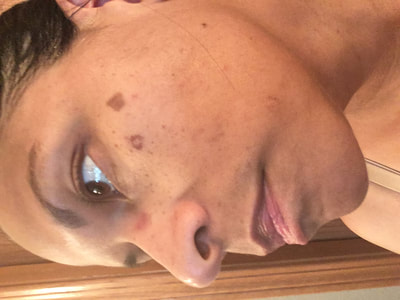
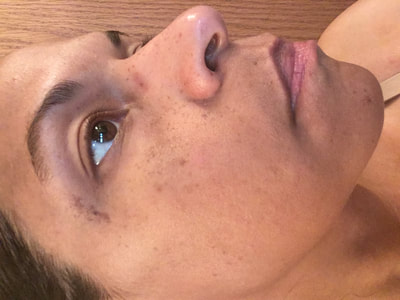
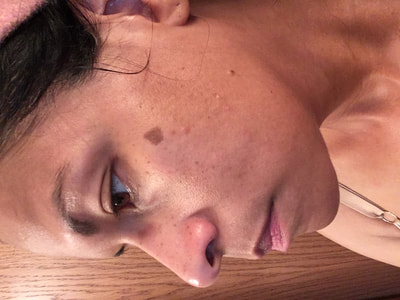
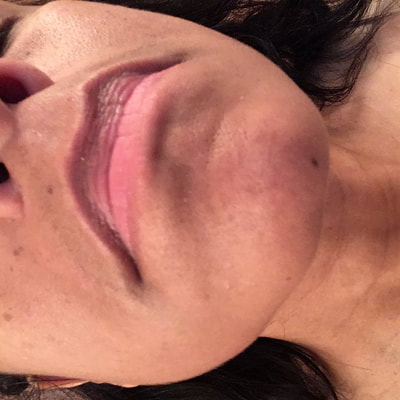
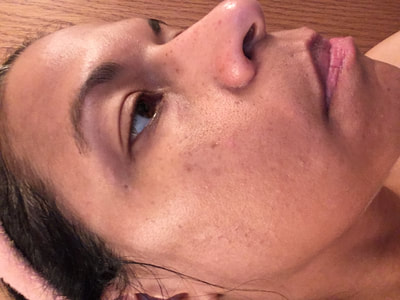

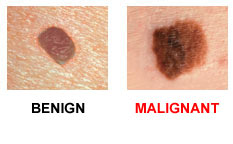


 RSS Feed
RSS Feed
